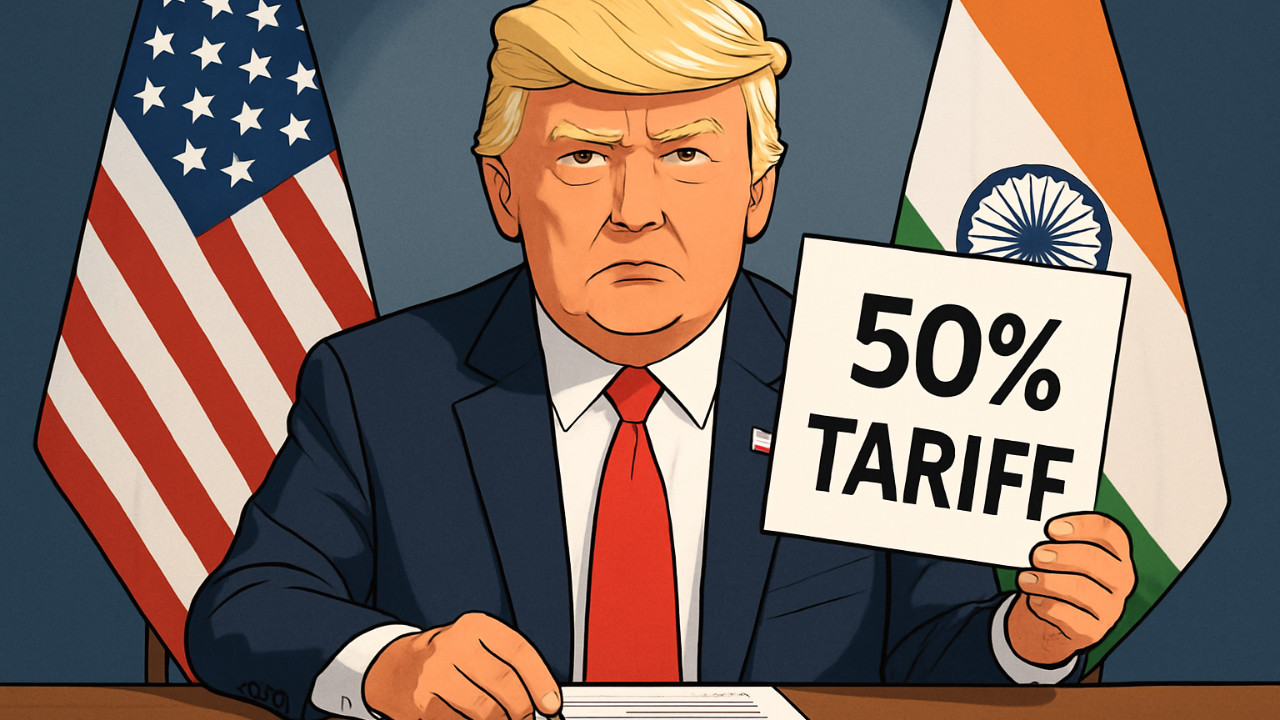US tariffs on Indian goods have doubled to 50% due to Russian oil purchases, impacting $47-48 billion in exports. Indian industries face cost disadvantages against competitors like Vietnam and China. While India stands firm, experts warn of a ‘lose-lose’ situation, potentially harming both economies. The US could see GDP decline and rising inflation, with trade talks remaining tense.
The Tariff Tango: How US Duties are Reshaping India’s Export Landscape
The economic dance between India and the United States just got a little more complicated. Remember those rumblings about tariffs? Well, they’ve landed. As of recently, a fresh wave of US tariffs, targeting around 50 Indian products, has officially taken effect. This move is poised to ripple through several key sectors, leaving Indian exporters to navigate a newly challenging terrain.
But why now? And what exactly does it mean for Indian businesses and the overall economy? Let’s unpack this.
The US government’s decision stems from the expiration of India’s preferential trade status under the Generalized System of Preferences (GSP). The GSP, a program designed to foster economic growth in developing countries, allowed certain Indian goods to enter the US duty-free. This status was revoked a while back, citing concerns about India’s market access barriers and trade practices.

Now, without the GSP safety net, these 50-odd products, ranging from certain textiles and agricultural goods to engineering items, will face significantly higher import duties in the US. This translates directly to increased costs for American consumers and businesses importing from India, potentially making Indian goods less competitive.
Key Export Sectors Feeling the Pinch
Several Indian export hubs are bracing for impact. Industries like textiles, a major employment generator in India, stand to lose a significant chunk of their US market share. Similarly, the agricultural sector, already grappling with various challenges, will face added pressure as exports become more expensive. Engineering goods, another key component of India’s export basket, might also experience a slowdown.
The potential fallout isn’t just about reduced export volumes. It’s also about the ripple effects on employment, investment, and overall economic growth. Businesses, particularly small and medium-sized enterprises (SMEs) that rely heavily on US exports, could face tough decisions about scaling back operations or even shutting down.
Is a Trade Deal Still on the Table?
The million-dollar question is: can India and the US still salvage a comprehensive trade deal? Negotiations have been ongoing for years, with both sides aiming to address various trade barriers and deepen economic cooperation. However, progress has been slow, with sticking points including agricultural market access, intellectual property rights, and data localization policies.
While the implementation of these tariffs certainly adds a layer of complexity to the relationship, it doesn’t necessarily preclude a future trade agreement. In fact, some analysts believe that it could even serve as a catalyst to accelerate negotiations, pushing both sides to find common ground and resolve their differences. The potential benefits of a mutually beneficial trade deal are too significant to ignore.
Navigating the New Reality: Strategies for Indian Exporters
So, what can Indian exporters do to weather this storm? Diversification is key. Relying solely on the US market is no longer a viable strategy. Exploring new markets in Asia, Europe, and other regions can help mitigate the impact of the US tariffs.
Additionally, focusing on product innovation and value addition can help Indian exporters maintain their competitiveness. By offering higher-quality, more specialized products, they can justify higher prices and retain their market share. Internal Link: Read about India’s recent manufacturing initiatives.
Furthermore, the Indian government could play a crucial role in supporting exporters through various policy measures, such as providing financial assistance, streamlining export procedures, and promoting trade facilitation. This could include tax benefits, lowered interest rates on business loans and simplified documentation.
Ultimately, navigating this new trade landscape will require a combination of strategic adaptation, innovation, and government support. It’s a challenging situation, no doubt, but also an opportunity for Indian exporters to become more resilient and globally competitive.
The Road Ahead
The implementation of US tariffs on Indian goods marks a significant shift in the bilateral trade relationship. While the immediate impact will likely be felt by certain export sectors, the long-term implications remain to be seen. The key to minimizing the negative consequences lies in proactive adaptation, diversification, and a renewed push for a comprehensive trade agreement that benefits both nations. The economic landscape is ever evolving, and India’s ability to adjust and thrive will be critical in the years to come.







